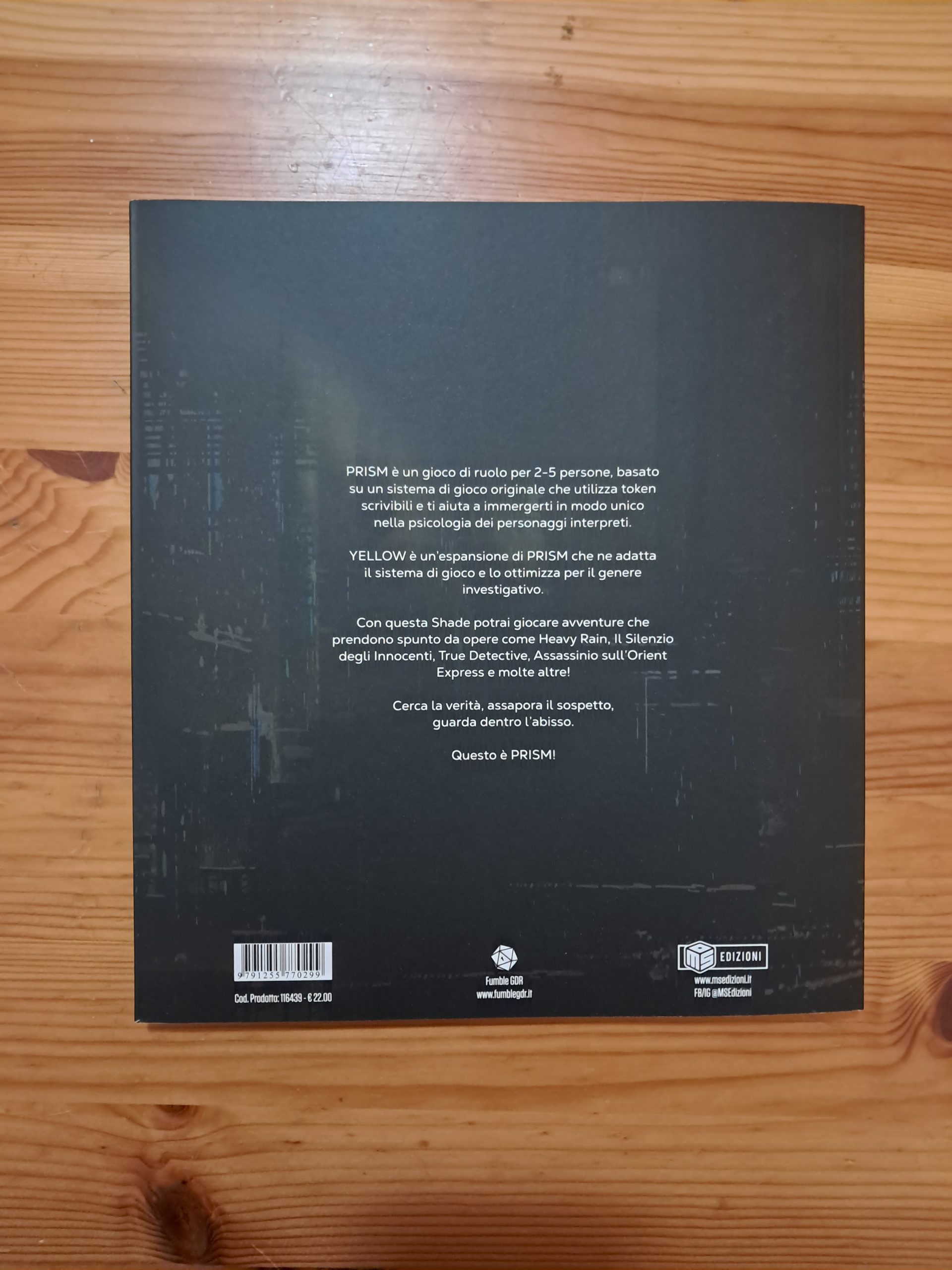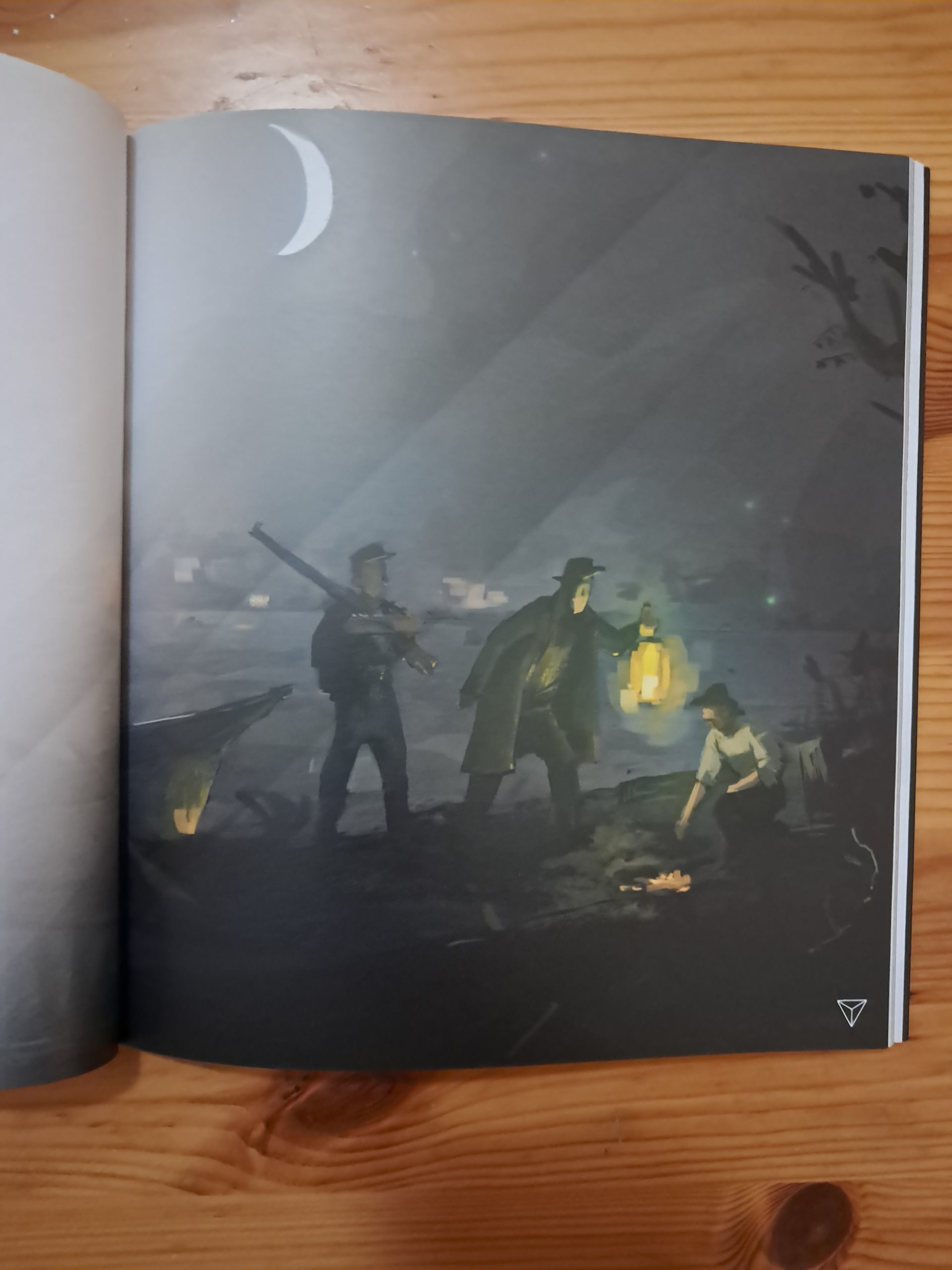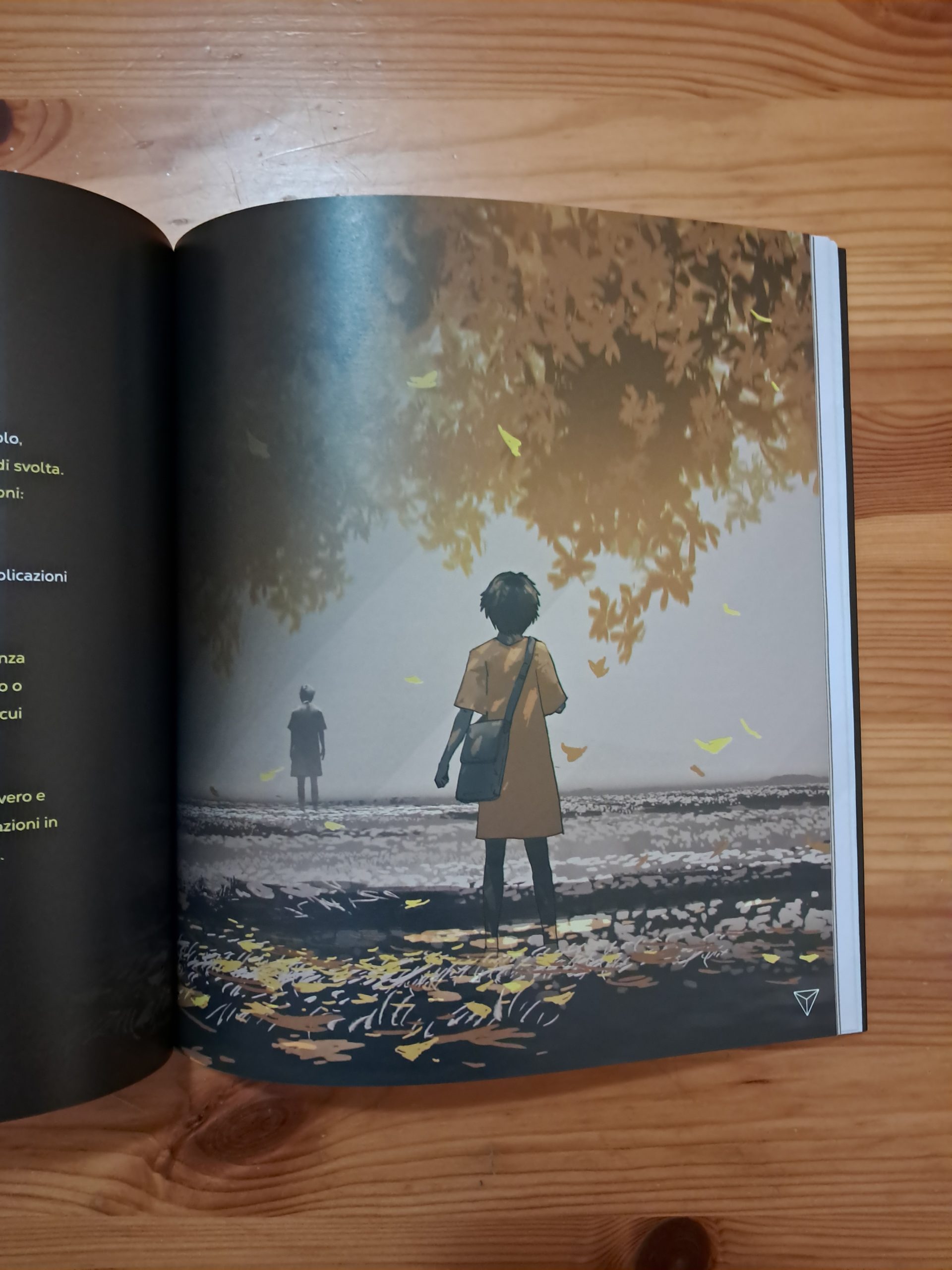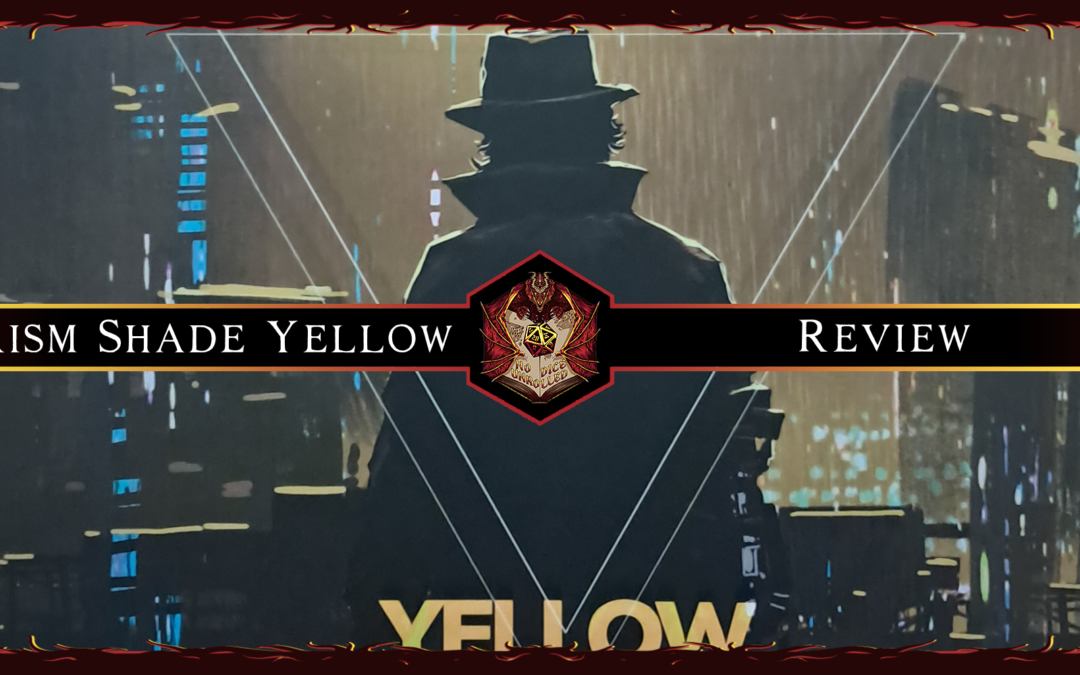In this review we will analyze the Shade Yellow, a manual that adapts the famous role-playing game Prism to investigative stories.
Shade Yellow is also the work of Claudio Pustorino, and is published by MS Edizioni. We thank the publisher for providing us with a copy to review. We recommend you follow them on their Facebook page, Instagram page, and official website to discover many new projects.
If you are interested in buying it, you can find the physical version (including PDF) for 22 euros on the official store. The digital-only version costs 13 euros. I remind you that with the code NoDiceUnrolled10 you will have a 10% discount!
Also keep in mind that, in order to take advantage of the Shade Yellow, it is necessary to have the basic Prism manual, of which we have also written our own review.
Prism Shade Yellow Structure and Aesthetics Review
Aesthetically speaking, the Shade Yellow manual for Prism is a little gem to have in your library.
In fact, it comes in an elegant edition with a soft cover with flaps, in a 21.5 x 24 cm format of 88 pages. Structurally, the manual is divided into 7 chapters, all written in a concise and clear way.


A value of the manual is the great use of bold, italics and colors to highlight fundamental terms or concepts. Thanks to these precautions, reading is very easy and the information is organized in a precise way.
Artistically speaking, Prism‘s Shade Yellow is a masterpiece. The dominant colour is yellow, which allows the manual to maintain a very consistent stylistic and thematic figure. In this way we find beautiful illustrations that make reading an even greater pleasure.
The Setting and the Roles
One of the big changes compared to Prism “base” are the Pilastri (Pillars), that is, the foundations of the game. They are replaced to allow the creation of investigative stories. To contextualize even better, each Pilastro (Pillar) is associated with one or more references such as films, comics or books.
Speaking of the setting, however, the approach is reduced, going from the 5 elements of the basic manual to only two: the Cornice (Frame) and the Detectives. The procedure has remained unchanged: for each of them you have to answer questions that will define and outline them. All the questions are very interesting and propose various ideas to create settings that capture and involve.


Also in this Shade we find differences with regard to the Roles, that is, the roles that the players can play. In this case we have the Misteri (Mysteries) (who narrates) and the Detectives (the PCs); obviously, as in the basic manual, they are completely interchangeable, allowing you to create exciting stories from many perspectives.
Already with these changes alone, the Shade Yellow of Prism shows itself as a great revolution compared to the basic experience.
Emerging or Guided Mystery?
The most important novelty introduced in this Shade is the management of mystery and investigations.
In fact, the manual proposes two ways to create and carry out an investigation: Emergent or Guided.
In Emergent mode you will start with a very simple question and context; then all the other elements will be built by the game group during the various sessions. As a way of playing this is the most experimental and, of course, requires a cohesive and focused group. The manual provides examples and tips on how to carry out one or more sessions in this way, especially useful for novice players.


The Guided mode, on the other hand, is the most classic and consists of creating mystery in everything, defining clues, culprits, false clues and much more. This method is definitely the best for groups that have yet to get to know each other well or for one-shot, because everything is handled by the Misteri (Mysteries), although the experience of the Shade Yellow of Prism remains unchanged. In the manual we find a chapter dedicated to how to build a mystery in Guided mode full of tips to help novice players.
Shade Yellow ‘s New Mechanics for Prism
The game system remains the same as in the basic Prism manual, but Paura (Fear) is replaced by Sospetto (Suspect). In fact, while making a Punto di Svolta (Turning Point), instead of inserting Paura (Fear) labels, we will put the Sospetto (Suspect) labels. For all the rest, the mechanics do not vary and you can refer to the classic one.
Suspect tags are very important and players only put them in the bag when the Detective has some suspicion (precisely) about the investigation. The extracted Sospetto (Suspect) labels can be used in two ways: add or edit Tratti (Traits), or create Teorie (Theories).


Teorie (Theories) are a novelty of this Shade. Their use is very simple: after creating it, it is placed in the middle of the table and each Detective can use it in subsequent (Punti di Svolta) Turning Points. In this way, especially in pop-up mode, players can collaborate based on a common theory. In addition, this allows you to create a network of Teorie (Theories) and suppositions in the center of the table.
I really appreciated the presence of examples and tips to help players familiarize themselves with these mechanics.
Conclusion of the Review of the Shade Yellow for Prism
To conclude this review, I find Prism’s Shade Yellow a great product that manages to modify and adapt Prism’s excellent system for telling investigative stories. The whole thing is then embellished with truly high-level writing and an artistic sector to be left open-mouthed.
For these reasons, the Shade Yellow is an excellent manual suitable for fans of Prism and investigative games, who will find bread for their teeth.

